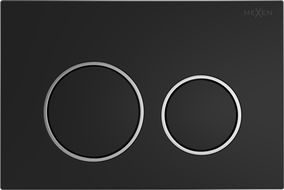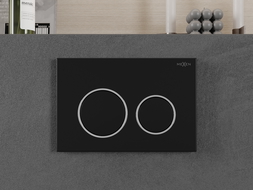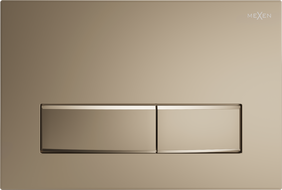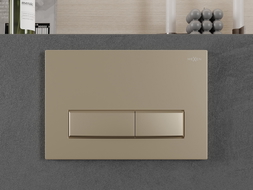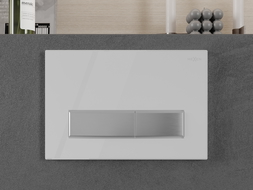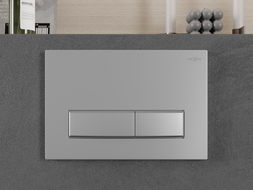
None of us can imagine a modern toilet without a toilet bowl and a matching toilet cistern. Every day we flush away waste multiple times without giving much thought to how the cistern works. It's one of those life-easing elements, but sometimes the toilet may not work as it should, causing problems when flushing. However, there's no need to call a plumber immediately, as sometimes you can descale the toilet cistern yourself.
How does a toilet cistern work?
Before attempting any repairs yourself, it's worth familiarizing yourself with the operation of the cistern briefly to avoid damaging it while cleaning. It is not a particularly complicated mechanism. The most vital components are two valves that allow the filling and emptying of the cistern. An essential part of every cistern is the float, which opens and closes the discharge valve, preventing uncontrolled water leakage.
When you press the flush button, water flows into the toilet bowl, and the water supply valve causes the cistern to fill again. This simple mechanism works quite efficiently, but over time, it may start to get stuck. In such situations, the tank may not fill up to the appropriate level or may begin to leak. The most common cause of such a malfunction is limescale deposits forming on various parts of the cistern.
How to easily remove limescale from a toilet cistern?
If the cistern starts to get stuck and water doesn't flow into the toilet properly, you might suspect that limescale deposits have formed inside the cistern's mechanisms. This is quite a common problem, especially if your home is supplied with hard water, rich in minerals that deposit as limescale. Fortunately, you can clean the toilet cistern quite easily using home methods. These methods are safe for the environment, and the remnants from descaling can be flushed down the drain.
Upon opening the cistern cover, you may find it simply dirty, with the walls and various parts of the cistern coated with limescale. In this case, it's worth using a solution containing hot water and vinegar or citric acid dissolved in water. Usually, a cup of vinegar is sufficient, but in cases of particularly heavy limescale, a larger amount of vinegar can be used. Pour the solution after flushing the water, and then leave it for a few hours or even overnight. Then proceed to clean using a brush, which will help you easily remove softened limescale and deposits from the entire cistern.
How to prevent limescale build-up in the toilet cistern?
Regular maintenance of the toilet cistern can significantly extend its lifespan and ensure hygiene and safety in your toilet. Therefore, it's worth remembering to clean not only the toilet bowl but also to remove deposits that may form in the tank. Cleaning the cistern requires just a few minutes, and it's worth doing at least once every six months.
Baking soda and vinegar, useful for cleaning, are probably already in every home, but you can also use special tablets that effectively help remove everything deposited inside the cistern. With their help, you can quickly get rid of dirt, limescale deposits, and bacteria that may develop in the toilet. An advantage might be that there's no need to use a brush additionally.
Cleaning the toilet should not stop at rinsing the toilet bowl with clean water; it's worth checking inside the tank from time to time and taking care of the inner surfaces. Regular removal of deposits ensures trouble-free operation of the toilet and minimizes various malfunctions that may occur when limescale damages the gasket or clogs the outlet.



















